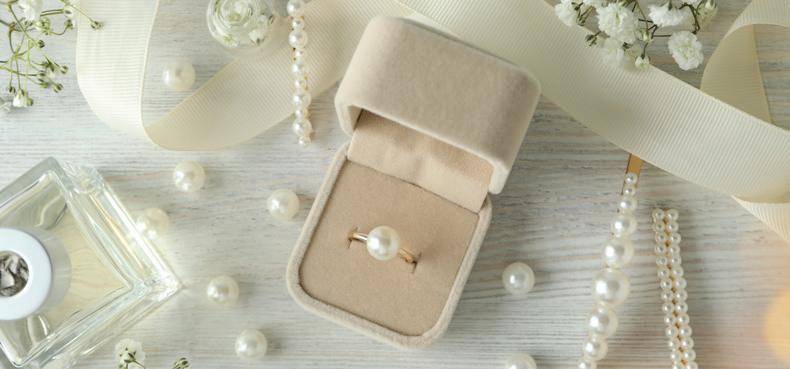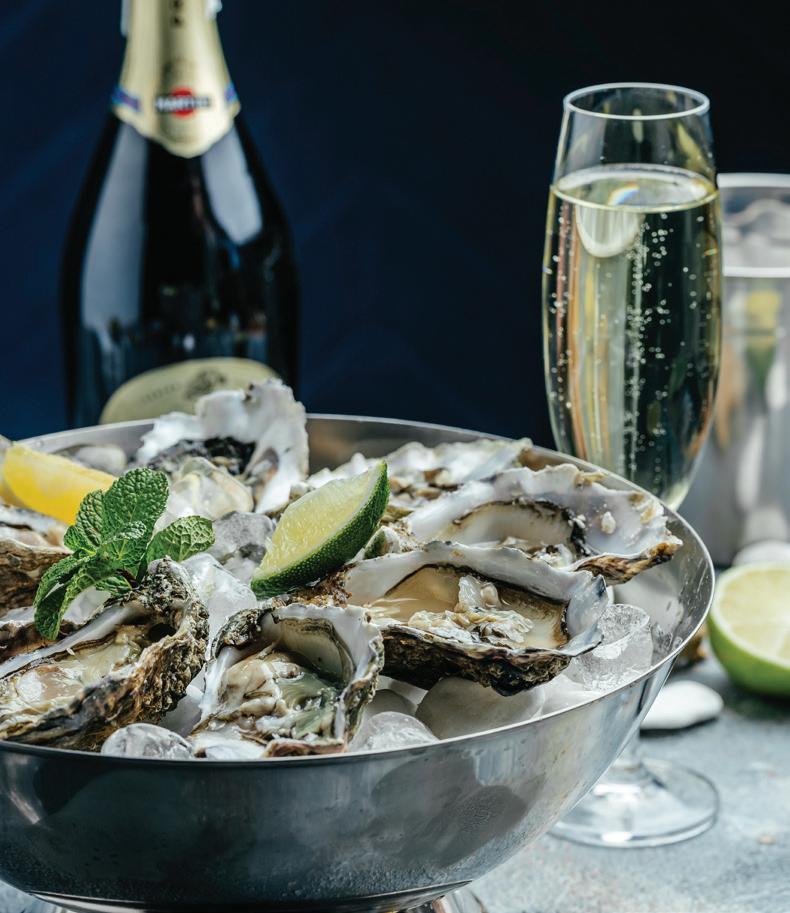
4 minute read
LOVE IS IN THE AIR
Just gorgeous
Shiny, creamy and lustrous … what’s not to love about pearls? Eminently desirable, a string of pearls or drop earrings add a special touch to any time of day. They are associated with Valentine’s Day as one of the top choices when selecting a special gift.
Compared to hard, rock-borne diamonds, many find pearls special because they are literally made by a living creature. With a not-so-inspiring beginning pearls are the natural reaction by an oyster or mussel to an irritation. The annoying bit of grit is slowly covered layer by layer of nacre until eventually a pearl is formed.
Because this happens rarely in natural conditions, pearl farmers have developed techniques to insert the irritant into a living oyster. The Australian cultured pearl industry is world-class. Wild oysters are collected, ‘seeded’ (likely to be a small plastic ball or nucleus) and returned to the sea in cages. Pearl farms are diligently attended by surface crews who keep the nacre-forming oysters clean and healthy for up to four years until harvesting.
Part of the romance of the pearl is the association with the history of pearl diving. Broome on the coast of the Kimberly in WA is a well-known centre for salt water natural and cultured pearls.

The museum showcases the dangers of the industry including the extreme risks of hard-hat diving and when cyclones decimated a fleet of luggers in 1935 with 142 (mostly pearlers) lost.
Courageous – or foolish depending on your personal risk assessment – divers in early tech suits were sent to the ocean floor, connected to surface air pumps by hoses to a brass helmet and wore lead boots to keep them weighed down. Peering out of portholes divers walked along looking for pearl oysters, filling a bag which was sent to the surface. Pearl shell was also valuable and used for buttons and jewellery. Dangers included nitrogen narcosis, decompression sickness, losing contact with the surface and the occasional shark.
In our more modern age wetsuit-clad divers use a hookah system of air supply from a surface ship, search for a good patch and scoop up Pinctada maxima oysters – but it’s still a dangerous occupation.
Pearls – together with gifts of roses, chocolates and a fancy card – are now part of celebrating Valentine’s Day. If looked after, pearls are a lifetime gift. Some say they increase in lustre when worn regularly so don’t keep them in the dark … they belong in the light. Visit: t.ly/f06L-. Ruth Hickey
Are oysters an aphrodisiac?

It is often said that oysters improve your libido and may act as an aphrodisiac – which typically refers to a food or drug that arouses sexual desire. The term aphrodisiaca originated from the Latin name 17th-century medics used to describe a new category of pharmacological substances.
The 18th-century Italian author Giacomo Casanova reportedly ate large amounts of oysters due to their potential stimulating properties. So, do oysters boost your libido?
Oysters contain or support the production of nutrients and compounds that may improve sexual performance, desire or arousal. These include zinc, D-aspartic acid, dopamine and omega-3 fatty acids.
A single oyster contains 5.5mg of zinc which is half of the recommended daily amount for adult males and more than half for adult females. Some research indicates that zinc is essential for preserving sexual health and testosterone levels and it may positively affect fertility. Oysters also contain D-aspartic acid, an amino acid that may have a role in boosting testosterone production and play a similar role as zinc in boosting sexual arousal.
Research also indicates that zinc may help to support levels of dopamine – a neurotransmitter that studies suggest is involved in sexual behaviour. Dopamine is responsible for feelings of pleasure and reward and may improve erectile dysfunction in males and sexual response in females. No studies directly measure the effect of zinc, D-aspartic acid, or dopamine from oysters on libido however, so aphrodisiac effects are inconclusive.
Seafood, such as oysters, is a good source of omega-3 fatty acids including eicosapentaenoic acid (EPA) and docosahexaenoic acid (DHA). Some research suggests omega-3s may help improve sexual performance which could have an aphrodisiac effect in some people although studies do not demonstrate that they directly boost libido.
Maybe don't get too excited though because if anecdotal evidence is accurate, according to one unnamed member of the Eumundi Voice writers' group: “My husband once ate two dozen oysters. Not one of them worked!”. Source: medicalnewstoday.com. Tania Watson







